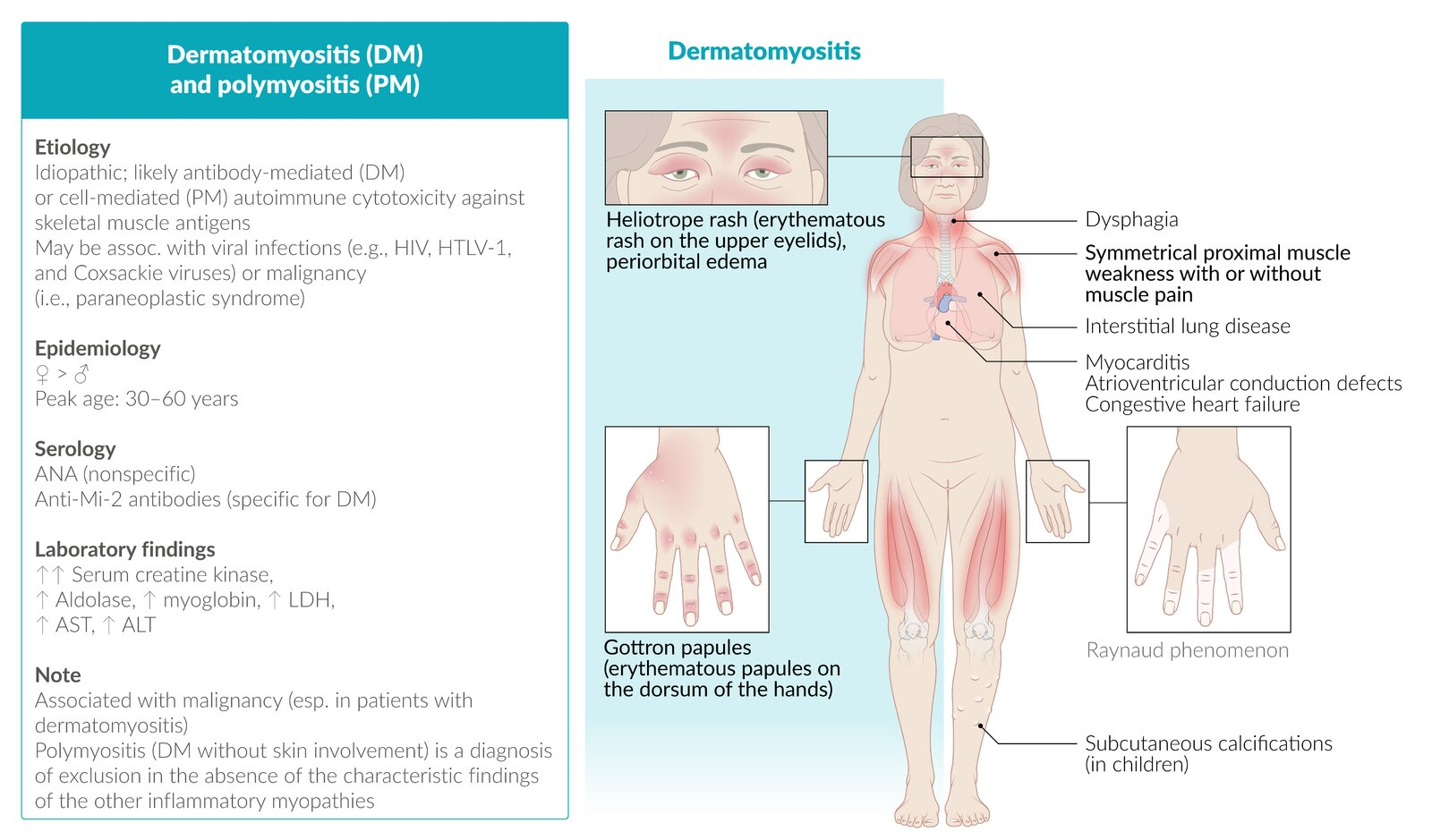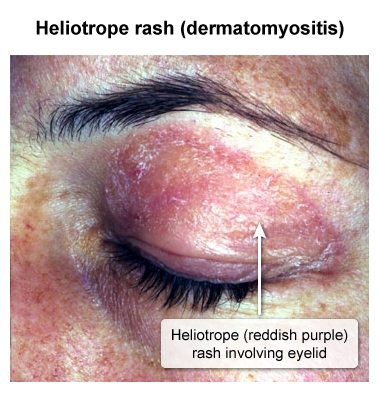Definition
- Dermatomyositis (DM): an inflammatory myopathy characterized by progressive symmetrical proximal muscle weakness and distinctive skin findings
- Polymyositis (PM): an inflammatory myopathy affecting the proximal skeletal muscles, with evidence of elevated CK and myositis on EMG and biopsy in the absence of any of the characteristic findings of the other IIM (a rare diagnosis of exclusion)
Epidemiology
Etiology
- Polymyositis (PM): cell-mediated cytotoxicity against unidentified skeletal muscle antigens, chiefly affecting the endomysium
- Dermatomyositis (DM): idiopathic or paraneoplastic antibody-mediated vasculopathy, associated with malignancies (non-Hodgkin lymphoma; lung, stomach, colorectal, or ovarian cancer )
- may occur alone or as a paraneoplastic syndrome of an underlying malignancy, most commonly due to underlying adenocarcinoma (eg, ovary, lung, pancreas).
Pathophysiology
Clinical features



Tip
The clinical features of PM is similar to DM except no cutaneous features.
Diagnostics
- ↑ CK
- Antinuclear antibodies (ANAs)
- Myositis-specific antibodies
- Anti-Jo-1 antibodies (anti–histidyl-tRNA synthetase)

- Anti-Jo-1 antibodies (anti–histidyl-tRNA synthetase)
- Muscle biopsy: Gold standard for diagnosis of IIM
- Typical findings
- Muscle fiber damage
- Necrosis, degeneration, and regeneration
- Inflammatory cellular infiltrates
- DM: antibody-mediated inflammatory infiltrates that predominantly involve CD4+ T cells, plasmacytoid dendritic cells, and B lymphocytes in the perimysium (the connective tissue surrounding the fascicle); can lead to perifascicular atrophy
- IBM and PM: cell-mediated inflammatory infiltrates that predominantly involve cytotoxic CD8+ T cells in the endomysium (the connective tissue surrounding each muscle fiber), patchy necrosis
- Muscle fiber damage
- Typical findings